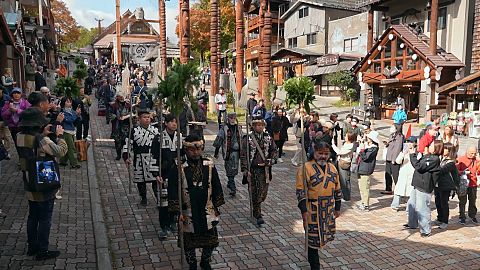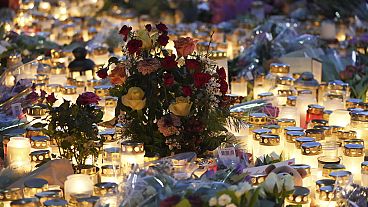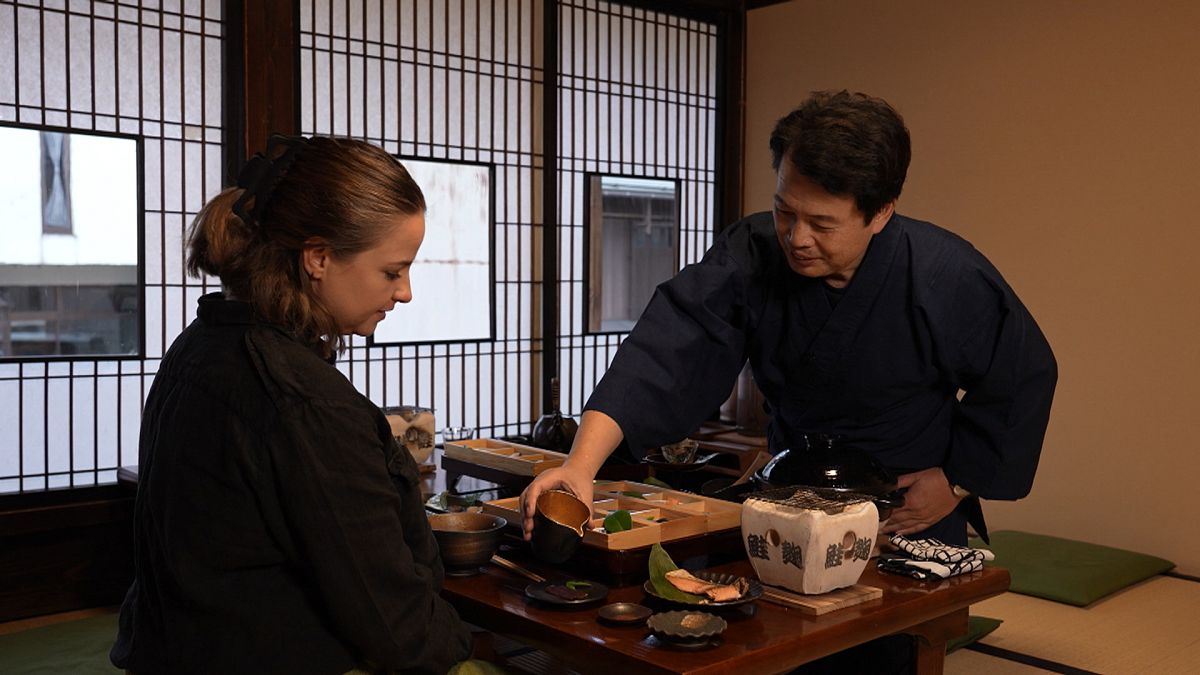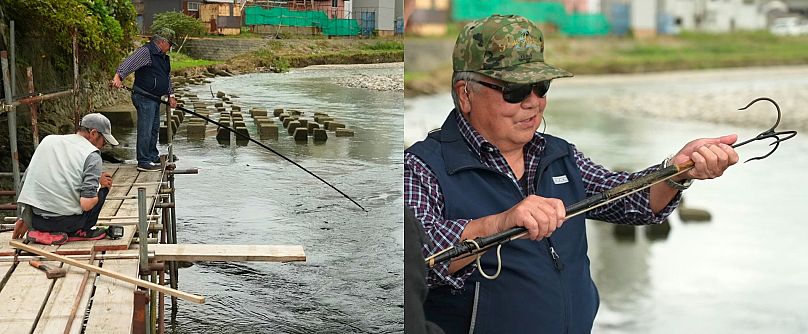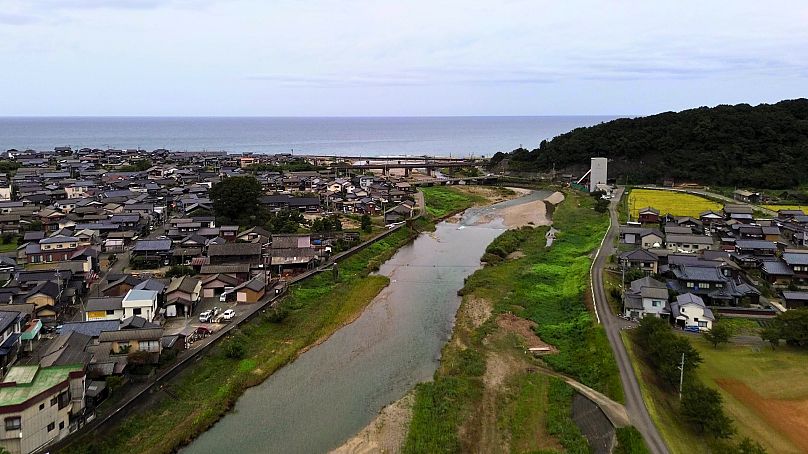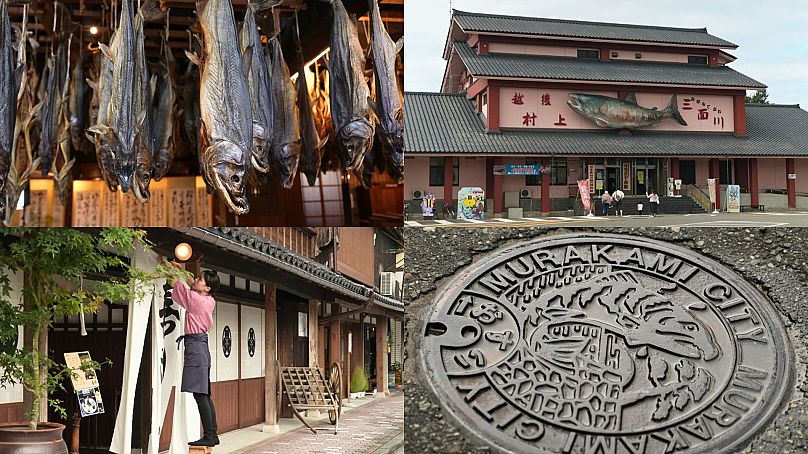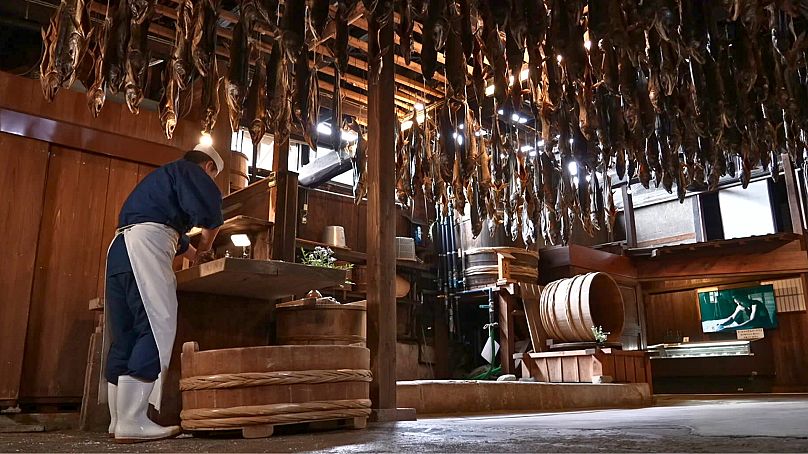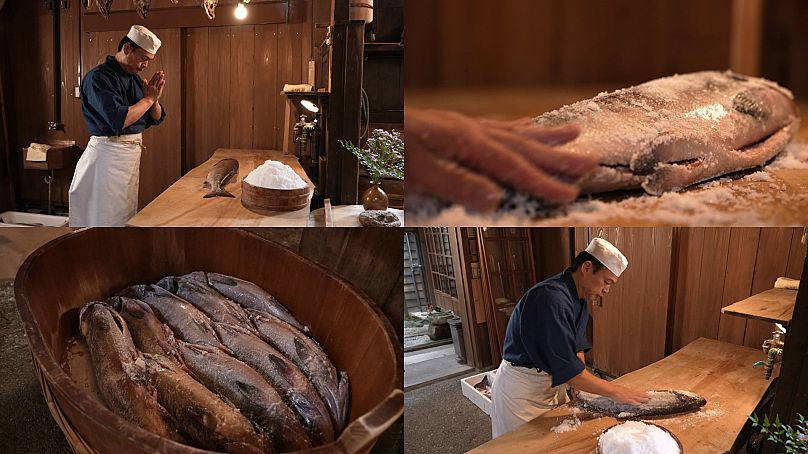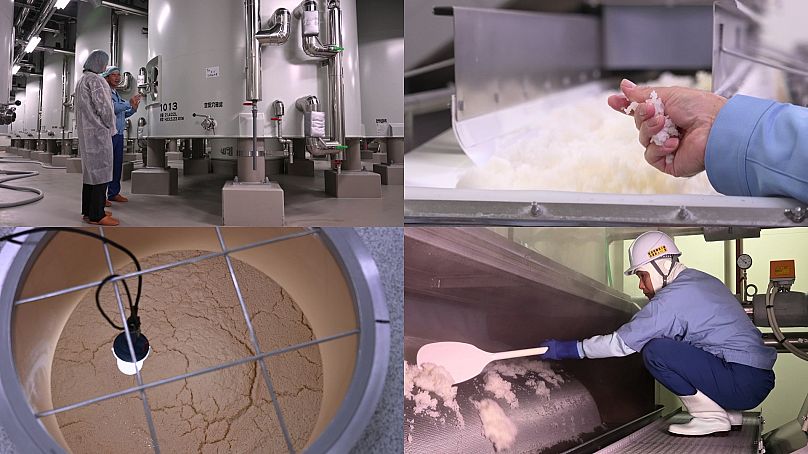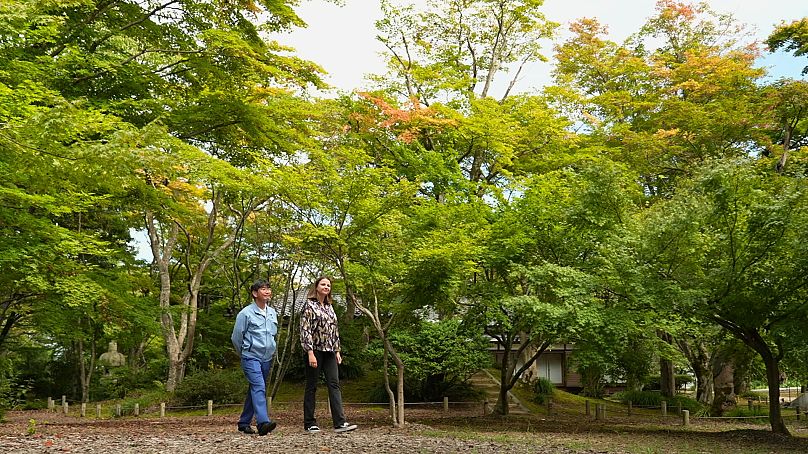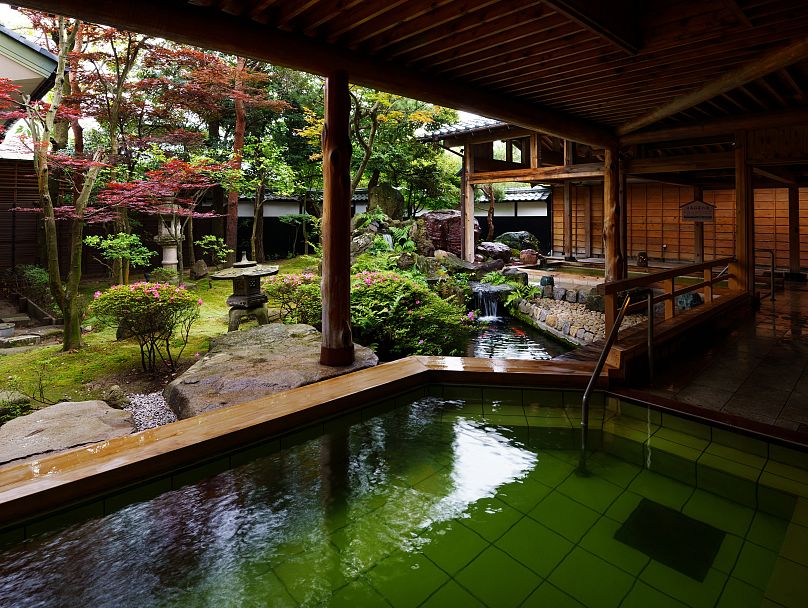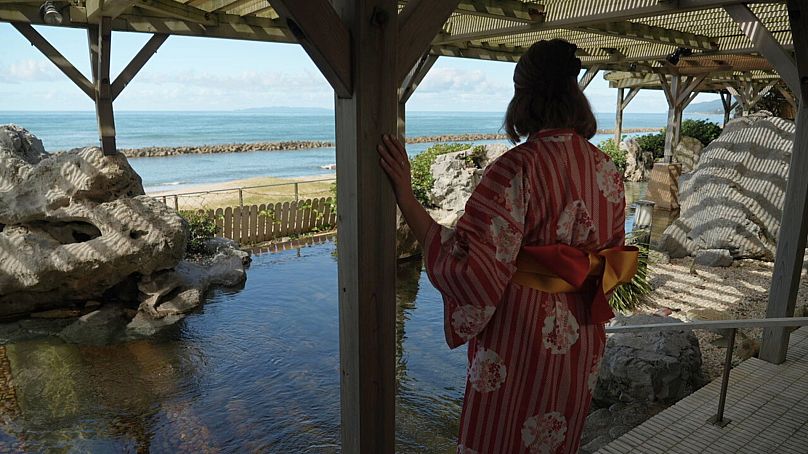In this new episode of Explore Sustainable Japan, we discover the sustainable food and drink culture in Niigata Prefecture – a region known for its salmon, rice, and sake.
Known as a culinary hotspot in Japan, Niigata Prefecture is blessed with fertile land, crystal clear water and a varied climate – all of which contribute to its exceptional local products.
This food-lovers’ paradise tends to fly under the radar for international travellers, but Niigata has much to offer adventurous foodies, through its richly varied food and drink culture.
In this new episode of Explore, we take a gourmet journey across Niigata to learn about the region’s sustainable gastronomy through two of its most famous products – salmon and sake.
Here’s a guide on how you, too, can take advantage of Niigata’s local experiences – while supporting the region’s recovery from the 2024 Noto Earthquake.
Visit Murakami, Japan’s “Salmon City”
Located where the Miomote and Okawa Rivers meet the Sea of Japan, Murakami City is a popular spot for spawning salmon.
Every autumn, the waterways become busy highways for hundreds of fish swimming upriver to lay their eggs. As the fish return, so do the fishermen, and you can witness the excitement yourself on Murakami’s riverbanks.
The most popular fishing technique in Murakami is also the oldest – fishermen use a homemade staff with a hook on the end, called kagi.
Because there’s no live bait to lure the fish, the fishermen have to get crafty. They set up wooden platforms and traps called kodo and camouflage them with cypress saplings and ferns.
The salmon eggs are saved, to be artificially inseminated and hatched in spring. Murakami City is said to be the first place in the world to propagate salmon in this way, back in the 18th century when it was a samurai castle town.
Today, it’s still known as “Salmon City” – and strolling around the city’s picturesque streets, it’s obvious that salmon is central to Murakami’s identity.
In the winter, salmon are strung out on nearly every storefront – cured salmon, called sakabitashi, is a Murakami speciality.
To taste this unique delicacy, head to Sennensake Kikkawa, a family-owned and operated business that specialises in Murakami salmon and sake.
If you’re lucky, you might catch owner Shinji Kikkawa curing the salmon the traditional Murakami way, using only sea salt. The salmon dries from one month to one year.
“After drying for a year and being exposed to the winds of Murakami, the salmon develops a special umami,” Kikkawa told Euronews Travel.
Salmon is so revered in Murakami that it is always handled with the utmost respect – when gutted, the fish’s stomach is opened in two incisions to avoid suggestions of harakiri, a form of ritual suicide in which dishonoured samurai would disembowel themselves.
Every part of the salmon is eaten, including its organs, fins and skin. It’s said Murakami has 100 different salmon recipes – and you can try 22 of them at the restaurant Izutsuya, also owned by the Kikkawa family.
One of Izutsuya’s most delightful dishes is salmon skin, which curls up like a claw as you grill it at your table. The meal is also accompanied by Niigata rice – widely considered the best in Japan.
Try some of Japan’s finest sake
Niigata’s famous rice is the key ingredient in one of its other specialities – sake.
The region’s geography makes it particularly suited for sake production – heavy snowfall from its mountains provides the purest water, the most important element in sake.
To get a closer look at Niigata sake, head to Asahi-Shuzo, the largest sake brewery in Nagaoka City, founded in 1830. On a brewery tour, visitors can see each step of the process – from rice polishing and koji processing to fermentation and bottling.
Asahi-Shuzo has a strong focus on environmental conservation, and leads a local initiative to save the region’s fireflies, which are believed to be an indicator of water quality.
On summer evenings, you can see the fruits of their labour – bioluminescent bugs twinkling joyfully – as you stroll through the brewery’s grounds.
In autumn, visitors can enjoy the red maple trees Asahi-Shuzo planted in the Momijien Maple Garden overlooking the brewery.
“Sake is made from water and rice, so water is very important,” Asahi-Shuzo master brewer Motoyoshi Yamaga explained to Euronews Travel. “That’s why we plant trees here, so we can have clean water all the time.”
At Sara no Sato Asahiyama, which houses the brewery’s shop and restaurant, you can try the different varieties of Asahi-Shuzo’s flagship sake label – Kubota.
Tasting each different sake side by side is a wonderful way to introduce your palette to the subtle aromas and flavours.
Relax in an outdoor hot spring, or ‘onsen’
After you’ve gotten your fill of salmon and sake, relax in one of Niigata’s 144 different onsen, or natural hot springs.
A holistic experience, onsen getaways are a favourite pastime for Japanese people and often start with a stay in a traditional inn, or ryokan.
For those who treasure their comfort, try Tsukioka Onsen Masyuu, which was recently renovated to combine the charm of a traditional ryokan with the luxury of a hotel.
The inn’s indoor and outdoor baths feature sulphur-rich natural hot spring water with a beautiful emerald colour, which is believed to be good for skin and joints.
Omotenashi is the guiding principle here – the foundational Japanese concept takes hospitality a step further, representing an all-encompassing care for guests with warmth, graciousness and attentiveness.
And the dinner is exquisite – featuring seasonal local products arranged beautifully into an array of small dishes.
For a more down-to-earth experience, head to Senami Onsen and stay at Taikanso Senami no Yu, a larger institution with few frills and an extraordinary view of the Sea of Japan.
Their outdoor bath is an experience for all of your senses – you can smell the sea, hear the waves, feel the heat seeping into your bones and watch the horizon all at once. It’s a great place to sit and reflect at the end of a long, fulfilling trip.
To learn more, watch the full episode of Explore Sustainable Japan in the player above.
You might also like
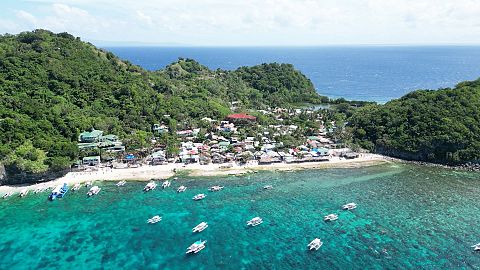
Negros Island: Sugar heritage and marine wonders of the Philippines
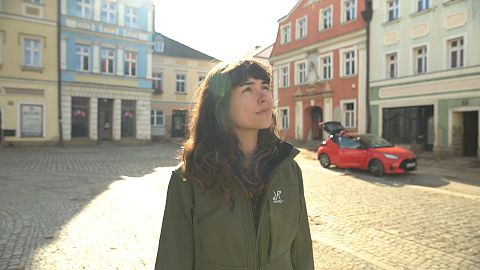
Lower Silesia's castles, spas and walks with Eva zu Beck
